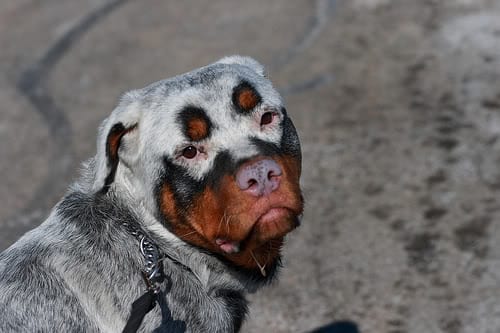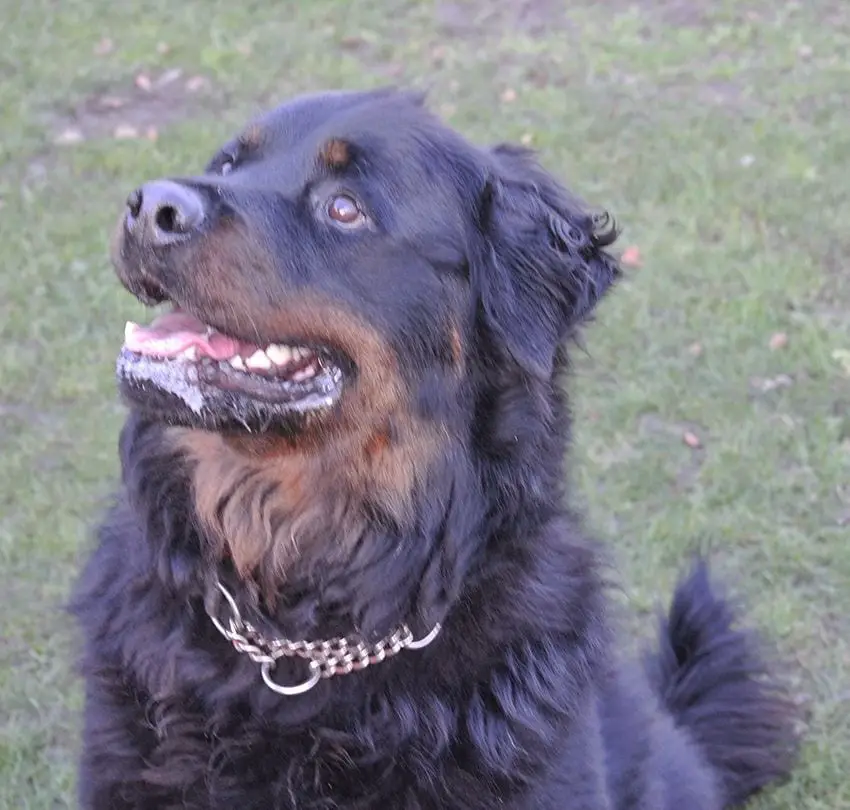Every breed has a color associated with it, and for a Rottweiler, the standard combination is invariably black with specks of tan or mahogany brown in the right areas. Only rarely do we come across Rottweiler colors that are in variance from this familiar combination. They are not classified as Rottweilers as they do not conform to the accepted color scheme of a black base coat with brown spots.
Termed off-step, they are not allowed as participants in purebred dog shows. It is assumed that Rottweiler colors that vary from the accepted combination are a result of cross-breeding somewhere up the ancestral tree.
READ: These Mixed Breed Rotties Are The Real Winners: 10 Best Rottweiler Hybrids
The Significance Of ‘Other’ Colors
The officially accepted color combination for Rottweiler colors is a black coat as the base. There can be distinctive markings of specified shades of brown like deep mahogany or tannish color. It can even be a shade in the middle like pine wood or oak. There are rare Rottweilers that are all white.
Other Rottweiler Colors That Result From Genetic Variations Even In Purebreds
Any Rottweiler who does not conform to the standard color scheme is not considered a pure breed. Variations are rare and most breeding communities avoid them.
Albino

An all-white Rottweiler is invariably an albino and lacks a particular genetic trait that gives them their standard colors. They have pale white fur. Albino Rotties have pink shades in their eyes. They unusually have vision problems and may go blind if not treated.
Blue
A blue Rottweiler is a misleading label and generally refers to the grayish tone, instead of the familiar black, in some dogs. The brown markings generally remain the same but are lighter in shade.
Red

Red is another misleading reference to Rottweilers with varying shades of brown that gives them a flaming effect. The only thing unique is that they have no black color on the coat. The blending of various browns gives them a red appearance. They are highly prized for their rarity.
Pure Black
Purebred black Rottweilers are rare. They are generally born of pure breed Rottweilers who are all black themselves. But as the color variation is not accepted, officially they are not accepted as Rottweilers for shows.

Rottweilers having long fur are also a rare variation. They might not conform to the official version of the purebred as they do not have short hair as required in established versions but they undoubtedly are Rottweilers. These long-haired Rottweilers are also referred to as “rough-haired”. These long-haired Rotties have no medical issues or genetic deformities and have the standard medical risk evaluation of the purebred Rottweiler.
READ: Have You Met A Miniature Rottweiler Yet?
Many professional breeders prefer that breeds which do not conform to standard Rottweiler colors be spayed or neutered to prevent the issue of such “impure” breeds. But all Rotties deserve our love, don’t they?



